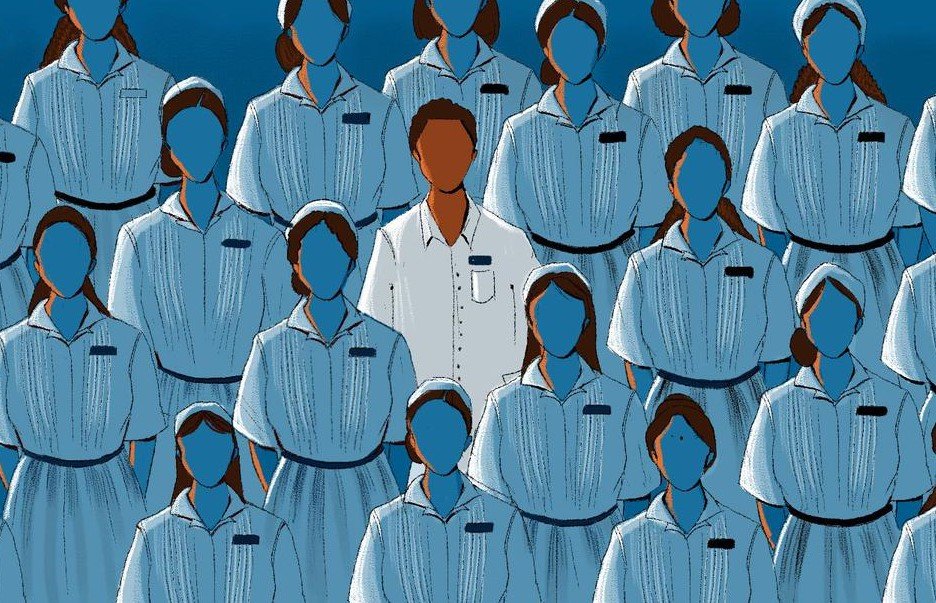The gendered dynamics of healthcare in India reveal a complex interplay of caste, class, and gender, deeply rooted in historical and socio-economic contexts. The COVID-19 pandemic brought to light the critical role of healthcare workers, especially women, who form the backbone of the sector. Despite their indispensable contributions, these workers often face systemic exploitation and undervaluation. This article delves into the multifaceted challenges faced by Indian healthcare workers, highlighting the intersectional issues of care extraction and gendered labor.

Historical Context and Gendered Roles
The history of healthcare in India is marked by the significant contributions of lower-caste women, who were the primary caregivers in rural areas. These women, often referred to as ‘dais,’ played crucial roles in midwifery and reproductive health. Despite their expertise, their work was undervalued due to the gendered perception of nursing as a ‘feminine’ occupation. This historical marginalization has persisted, influencing the current landscape of healthcare in India.
The colonial era further entrenched these gendered roles, with nursing being seen as a low-status job suitable only for women from marginalized communities. Post-independence, the situation did not improve significantly, as policies continued to overlook the needs and contributions of these workers. The lack of institutional support and recognition has perpetuated a cycle of exploitation and neglect.
In contemporary times, the gendered division of labor in healthcare remains stark. Women dominate the nursing profession, yet they are often subjected to poor working conditions, low pay, and limited career advancement opportunities. This systemic undervaluation of their labor is a reflection of broader societal attitudes towards women’s work.
The Impact of COVID-19
The COVID-19 pandemic exposed the vulnerabilities and challenges faced by healthcare workers in India. Women, who constitute the majority of the nursing workforce, bore the brunt of the crisis. They were on the front lines, providing essential care despite inadequate protective equipment, long working hours, and the constant risk of infection.
The pandemic also highlighted the issue of care extraction, where the emotional and physical labor of healthcare workers is exploited without adequate compensation or support. This phenomenon is particularly pronounced in the case of women, who are expected to perform caregiving roles both at work and at home. The dual burden of professional and domestic responsibilities has taken a toll on their mental and physical well-being.
Despite the public recognition and praise for healthcare workers during the pandemic, there has been little tangible change in their working conditions. The lack of systemic reforms and support mechanisms has left many workers feeling undervalued and overworked. This situation underscores the need for a comprehensive approach to address the structural issues in the healthcare sector.
Intersectionality and Policy Implications
Addressing the challenges faced by Indian healthcare workers requires an intersectional approach that considers the interplay of gender, caste, and class. Policies must be designed to recognize and value the contributions of women in healthcare, ensuring fair wages, safe working conditions, and opportunities for professional growth.
One of the key areas for intervention is the formalization of employment for healthcare workers. Many women in the sector work on a contractual or informal basis, which leaves them vulnerable to exploitation and job insecurity. Formalizing their employment status would provide them with legal protections and access to benefits such as health insurance and retirement plans.
Another critical aspect is the need for gender-sensitive policies that address the specific needs and challenges faced by women in healthcare. This includes measures to prevent workplace harassment, provide childcare support, and promote work-life balance. By creating an enabling environment, we can ensure that women are able to thrive in their professional roles without compromising their personal well-being.
Finally, there is a need for greater investment in the healthcare sector to improve infrastructure, training, and resources. This would not only enhance the quality of care provided but also create a more supportive and sustainable working environment for healthcare workers. By addressing the root causes of care extraction and gendered labor, we can build a more equitable and resilient healthcare system.
















